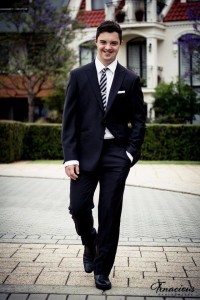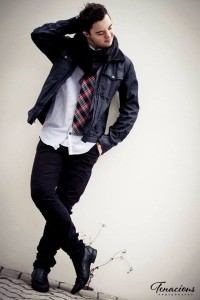By Catia Malaquias
When I first heard about 19 year old aspiring model, Jack McKevitt last year, I got excited. Jack, who has Down syndrome like my son Julius, had recently stepped out in front of the camera for a photo shoot after his passion for fashion, shopping and dressing up inspired him to have a go at modelling and to try to build a portfolio.
As a parent, watching my children grow up and develop a sense of themselves, the world around them and how they fit into it, I feel passionate about the importance of role-models. I want all my children to be exposed to positive role-models with whom they can identify as well as role-models who can teach them about the value of human diversity.
But when it comes to finding role models with disability – especially intellectual disability – in public life, on our TV screens, in movies, magazines, advertisements, children’s story books … where are they? It’s an understatement to say that they are few and far between.
In recent times however, models with disability have started to take on the fashion industry. You’ve probably heard about Madeline Stuart, the Brisbane teenager with Down syndrome who will be walking at New York Fashion Week next month, following in the footsteps of actress Jamie Brewer earlier this year. There is also the L’Oreal campaign with paralympian Aimee Mullins, Jillian Mercado, a model and fashion blogger who uses a wheelchair, has been in two campaigns for US department store Nordstrom and one for Diesel and has just signed up with IMG Models, Winnie Harlow currently appears in Diesel and Desigual, several catalogues of US Target have featured models with disability and, in the UK, department stores Debenhams and Marks & Spencer have also joined the movement. And there are of course over 104 companies worldwide, including 16 from Australia, that have committed to include models with disability in response to the #IMREADY social media campaign led by not-for-profit group Changing The Face of Beauty with whom Starting With Julius worked to promote the campaign locally.
It sounds like a few – and it is unmistakably a sign of change – but in relative terms it’s still too few. You can search advertising for hours (yes, I’ve tried it) without coming across any representation of disability. It has been estimated that of 125 million companies in the world, only 1% represent people with disability in their advertising.
But I’m confident that Jack will get his “big break” soon – he would be the first adult male model with Down syndrome in Australia – and he would more than hold his own in a Kmart, Myer or David Jones catalogue or campaign.
 And whatever he sells, I’ll probably buy. To me, it’s important that people with disability are included in advertising and the media and any brand that takes that step is going to engage my attention – and probably the attention of many of the 4 million Australians who have a disability as well as their parents, their siblings, their grandparents, their friends.
And whatever he sells, I’ll probably buy. To me, it’s important that people with disability are included in advertising and the media and any brand that takes that step is going to engage my attention – and probably the attention of many of the 4 million Australians who have a disability as well as their parents, their siblings, their grandparents, their friends.
So, advertisers, what are you waiting for? Jack is poised and your customers, are asking for change – are you listening?
Join us in this discussion on social media with the hashtags #adinclusion #startingwithjulius.
[Photos © Tenacious Photography]

